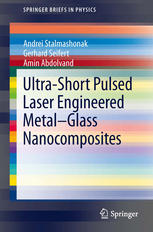

Most ebook files are in PDF format, so you can easily read them using various software such as Foxit Reader or directly on the Google Chrome browser.
Some ebook files are released by publishers in other formats such as .awz, .mobi, .epub, .fb2, etc. You may need to install specific software to read these formats on mobile/PC, such as Calibre.
Please read the tutorial at this link: https://ebookbell.com/faq
We offer FREE conversion to the popular formats you request; however, this may take some time. Therefore, right after payment, please email us, and we will try to provide the service as quickly as possible.
For some exceptional file formats or broken links (if any), please refrain from opening any disputes. Instead, email us first, and we will try to assist within a maximum of 6 hours.
EbookBell Team

5.0
50 reviewsGlasses containing metallic nanoparticles exhibit very promising linear and nonlinear optical properties, mainly due to the surface plasmon resonances (SPRs) of the nanoparticles. The spectral position in the visible and near-infrared range and polarization dependence of the SPR are characteristically determined by the nanoparticles’ shapes.
The focus of Ultra-Short Pulsed Laser Engineered Metal-Glass Nanocomposites is the interaction of intense ultra-short laser pulses with glass containing silver nanoparticles embedded in soda-lime glass, and nanostructural modifications in metal-glass nanocomposites induced by such laser pulses. In order to provide a comprehensive physical picture of the processes leading to laser-induced persistent shape transformation of the nanoparticles, series of experimental results investigating the dependences of laser assisted shape modifications of nanoparticles with laser pulse intensity, excitation wavelength, temperature are considered. In addition, the resulting local optical dichroism allows producing very flexibly polarizing optical (sub-) microstructures with well-specified optical properties. The achieved considerable progress towards technological application of this technique, in particular also for long-term optical data storage, is also discussed.